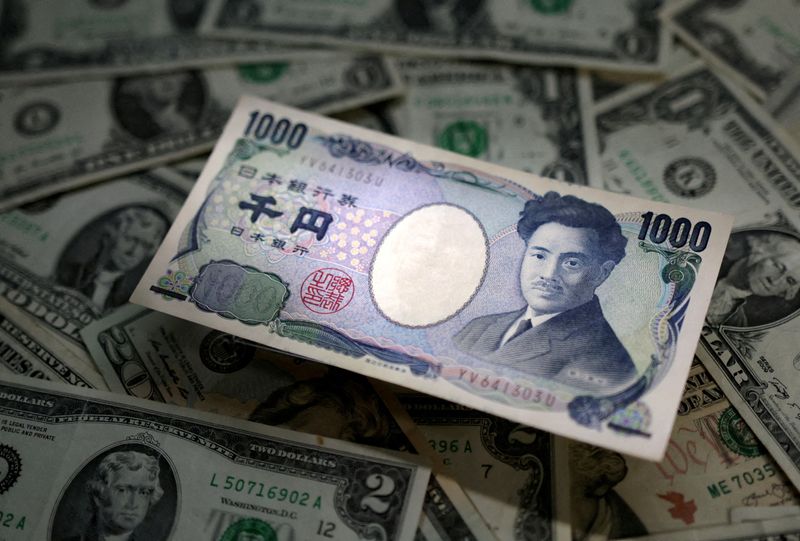By Marc Jones
LONDON (Reuters) - Japan's yen saw a sudden jump on Monday, suggesting the country's authorities may have finally followed through on the FX market intervention warnings they have be making for months.
Monday's moves follow a near-11% drop in the yen's value against the dollar this year and a 35% slump over the last three decades that has pushed it to a 34-year low.
Here are five charts to show what has been happening.
1/INTERVENTION EFFORTS
Monday's suspected intervention came after the yen dived past 160 to the dollar, well below where most FX traders had thought it would get to before the Bank of Japan reacted.
The last time authorities intervened was in September and October of 2022. They were estimated to have spent as much as 9.2 trillion yen ($60.78 billion) defending the currency at that time.
The other big effort came during the Asian financial crisis in 1998, when the yen lost almost 25% in just 14 months and reached nearly 148 per dollar in August that year. The United States joined in with the intervention push and the yen rallied over 35% in the following four months.
There has been intervention in the opposite direction too. In March 2011, Group of Seven (G7) nations jointly stepped in to stem yen strength when the currency spiked to a record high in the aftermath of a major earthquake that also crippled the large Fukushima nuclear plant.
2/TOKYO DRIFT
This isn't a sudden thing. The yen has been universally weak over the last four years. Not only is it down 31% against the greenback over this period, it is down 29% against China's currency, 29.5% against the euro and nearly 36% against the safe-haven Swiss franc.
3/STOCK UP
The weak yen has been no bad thing for Japan's stock market which is filled with companies that sell their products around the world. The weak yen keeps them competitive and has helped lift the market over 162% over the last decade, which is not far off the 174% rise the U.S. S&P 500 has seen over the same timeframe.
4/YIELD VS YEN
One of the main drivers of the yen's weakness is that Japanese interest rates are far lower than elsewhere in the world. Benchmark 10-year U.S. government bonds, for example, currently yield 3.7 percentage points more than Japan's.
This differential means it is not appealing for big international investors like pension funds to buy those Japanese government bonds, or JGBs as they are known, which it turn caps the demand for the yen.
Japan's government debt-to-GDP ratio is also among the highest in the world, having more than trebled to close to 260% from 85% back in 1994.

5/WHERE WE ARE AT
The yen's drop since the start of January is its third worst start to a year in the last three decades and the fifth time in the last six years that it has been down at this stage of the year.